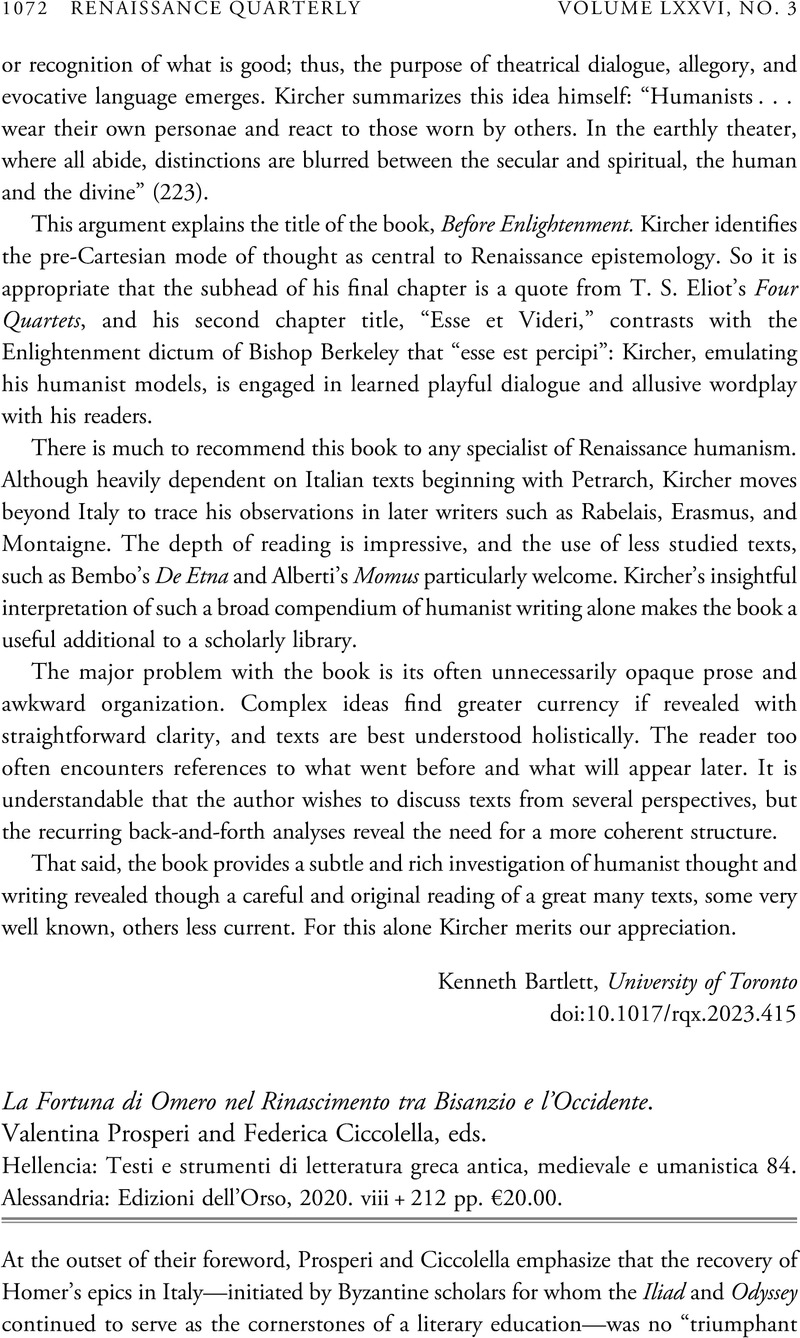No CrossRef data available.
Article contents
La Fortuna di Omero nel Rinascimento tra Bisanzio e l'Occidente. Valentina Prosperi and Federica Ciccolella, eds. Hellencia: Testi e strumenti di letteratura greca antica, medievale e umanistica 84. Alessandria: Edizioni dell'Orso, 2020. viii + 212 pp. €20.00.
Review products
La Fortuna di Omero nel Rinascimento tra Bisanzio e l'Occidente. Valentina Prosperi and Federica Ciccolella, eds. Hellencia: Testi e strumenti di letteratura greca antica, medievale e umanistica 84. Alessandria: Edizioni dell'Orso, 2020. viii + 212 pp. €20.00.
Published online by Cambridge University Press: 15 November 2023
Abstract
An abstract is not available for this content so a preview has been provided. Please use the Get access link above for information on how to access this content.

- Type
- Review
- Information
- Copyright
- Copyright © The Author(s), 2023. Published by the Renaissance Society of America



